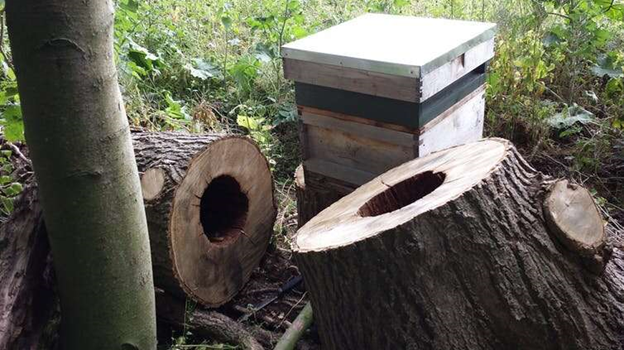Langstroth’s “Intelligent Cultivator” Part 1 of 7 – Thriving vs. Surviving
- Posted
Thriving vs. Surviving
For well over a hundred years the Langstroth style hive, patented in 1852 and named after its inventor Reverend Lorenzo Lorraine Langstroth (1810–1895), has become the most iconic and widely used hive design in the world. Its modular design made today from ¾” pine, ease of transportation for migratory pollination, and beneficial design for honey production have made it a favorite among both backyard and commercial beekeepers. Beyond its commercial benefits those using these thin-walled hives must recognize and tried to address its obvious limitations for northern climates and colony survival within the USA seeing normally a 35-50% annual colony loss come spring. It is important to remember that Rev. Langstroth himself had to deal with harsh northern winters pastoring and keeping honeybees in Massachusetts on the 42 parallel north. He would say of winter protection that…
“…it will be obvious to the intelligent cultivator, that protection against extremes of heat and cold, is a point of the VERY, FIRST IMPORTANCE; and yet this is the very point, which, in proportion to its importance, has been most overlooked. We have discarded, and very wisely, the straw hives of our ancestors; but such hives, with all their faults, were comparatively warm in Winter, and cool in Summer. We have undertaken to keep bees, where the cold of Winter, and the heat of Summer are alike intense; and where sudden and severe changes are often fatal to the brood: and yet we blindly persist in expecting success under circumstances in which any marked success is well-nigh impossible.” ~ Rev L. L. Langstroth
The exact reasons for the eventual acceptance of today’s thin-walled hives as a commercial and backyard beekeeping standard are hard to pinpoint but we can say that it has become so normalized that even academic research into multiple areas of honeybee biology is done in this same thin-walled style which likely presents results and learnings specific to the this man-made enclosure rather than the tree nest they have inhabited and preferred for millions of years. Rev. Langstroth fought against the use of thin equipment and pointed out that its acceptance is likely driven primarily by “cheapness”.
“I am well aware of the question which many of my readers have for some time been ready to ask me. Can you make one of your well-protected hives as cheaply as we construct our common hives? I would remind such questioners that it is hardly possible to build a well protected house as cheaply as a barn. . . . If they are not built of doubled materials they can be made for as little money as any other patent hive, and yet afford much greater protection, as the combs touch neither the top, bottom, nor sides of the hive. I recommend, however, a construction which, although somewhat more costly at first, is yet much cheaper in the end. Such is the passion of the American people for cheapness in the first cost of an article, even at the evident expense of dearness in the end, that many, I doubt not, will continue to lodge their bees in thin hives in spite of their conviction of the folly of doing, . . . .” ~ Rev L. L. Langstroth
More recent developments such as the growing profitability and national demand for migratory beekeeping, ease of construction and maintenance, and relatively lower material cost have made it hard for anyone buying equipment today to find anything else. It may be that in these reasons could hide an unrecognized attitude toward honeybees as machines that favors survival and maintenance verses thriving. This has also happened in many animal husbandry enterprises that turned commercial, and it is not a small reason for significant money and work to be applied in correcting situations in our food industry.
Let us consider that each year beekeepers in Northern America prepare their hives for the beginning of winter while at the same time fearing their expected losses at the start of spring. All types of techniques are suggested, and management philosophies discussed to help their colonies survive the enemies of cold, dampness, and starvation. No one solution applied to the thin-walled hives has consistently been successful, which has resulted in an almost “wait and see” mentality waiting for the time a few months later when a beekeeper opens their quite hive to see the poor dead out with its honeybees frozen in place at the top corner of a frame and piled on the moldy bottom board. This disheartening experience has surely driven many away from this healthy and lifegiving hobby.
I’m wondering if its time, with everything else that is attaching the humble honeybee, to consider where they can thrive the best and determine how our enclosures can be improved to fit what we see in the honeybees preferred and evolutionary solution – a tree cavity. How can we learn from the principles we apply to even our own homes in keeping ourselves cool in the summer and warm in the winter – homes that help us thrive and not just survive? How can a closure investigation of principles such thermal conductivity and the behaviors/responses of the superorganism, the honeybee colony, point to a better “protected” hive as Rev. Langstroth himself would suggest is the path of the “intelligent cultivator”?
